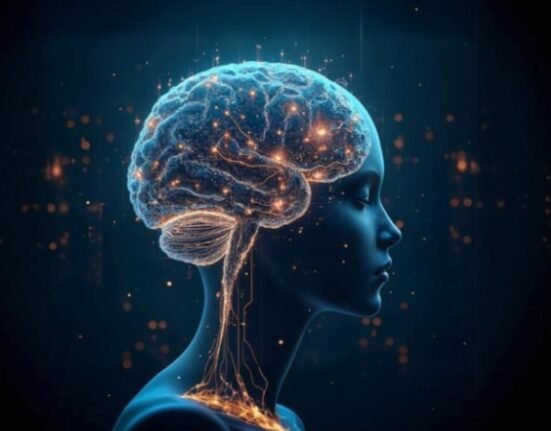Natural selection works to maximize the success of reproduction by exerting pressure on human physical traits and the brain’s perception of them. People approach appearance differently and are interested in different aspects of human attractiveness. People across all cultures do, however, agree on what constitutes attractiveness, and beautiful people globally exhibit higher rates of resource acquisition and successful reproduction than others. To determine facial beauty, the brain uses at least three modules—one each for identification, interpretation, and valuation—made up of related brain areas. Age and health are important factors that are taken into consideration, along with symmetry, averageness, face and body proportions, and the color and texture of the face.
Less research has been published on body judgments, and the most on the brain areas involved in determining attractiveness has been reported in relation to facial identification. The distribution and activation intensity of the brain regions used to evaluate the beauty of faces differ from those used to evaluate the beauty of non-facial visual art, indicating the evolutionary significance of facial beauty. Although a few loci have been connected to propose a pathway for evaluating beauty, this does not imply that this is the only way the brain makes these evaluations; in some situations, the brain’s plasticity may cause additional areas to be involved in reaching conclusions.
Also Read: The Beauty and Aesthetics of Art
What studies and researchers say about beauty ?
According to a number of studies, symmetrical faces are rated significantly higher for attractiveness, dominance, sexiness, and health when people are asked to compare versions of the faces. They are also thought to be more desirable as potential mates. Therefore, evolutionary psychologists understand the attractiveness of symmetry, just as they do traits that are considered masculine or feminine.
We can truly appreciate the craftsmanship of excellent genes in a gorgeous face. Even in situations where they are unable to discern the symmetry—that is, when just one half of the face is displayed—people still choose symmetrical faces. Potential correlations between symmetry and other desirable traits reflecting similar genetic endowment and general health are possible.
It has also been suggested, nevertheless, that the preference towards averages may have far simpler cognitive explanations. Besides faces, people show a preference for average-looking dogs, average-looking birds, and average-looking watches.
Prototypes are easier to understand and have a more recognizable appearance than less typical representatives of a specific class of items, such as the face of a watch or a prospective partner. Simple for the eyes is simple for the intellect.
Also Read: 8 Ways to Deal with Body Image Issues
Psychological impact of beauty
Attractive faces increase activity in several different brain regions related to reward processing among people. These include the area of the anterior cingulate cortex, that is possibly involved in influencing behavior in the future by learning reward outcomes, the medial prefrontal cortex, which also fires in response to rewarding inputs like money, and the nucleus accumbens. Attractive female faces also elicit activation of the orbitofrontal cortex in males (but not in women), a region that assesses the reward value of present activities (Cloutier, Heatherton, Whalen, & Kelley, 2008).
Researchers from Sweden and the Netherlands judged the health and attractiveness of subjects who took pictures both after a restful night’s sleep and after a period of lack of sleep (Axelsson, 2010). It should come as no surprise that those who had trouble sleeping were judged to be considerably less attractive when compared to those who had enough sleep. Also, they had a worse health rating.
Also Read: The Meaning of Self-Image for Girls
Neurological impact of beauty
Numerous levels of research have been conducted on the impacts of beauty on the perceiver, starting with the cerebral activity level, which reveals the brain areas that are responsive to attractiveness. For example, Chatarjee et al. (2009) describe a study that used functional magnetic resonance imaging (fMRI) to look at the brain activity linked to the fear of faces. In order to precisely regulate different geometric features, participants were required to execute two consecutive judgment tasks on artificial (computer-generated) faces: facial beautyrating and facial identity identification. The results show that a particular brain area, the ventral occipital region, remained receptive to face attractiveness in both scenarios despite the changes in neural correlates between the two tasks.
Cognitive impact of beauty
This region is naturally triggered by attractiveness and might be the neurological source of the psychological impacts of attractive faces. Studies on the processing benefits of attractive targets, for example, are at the cognitive processing level. Becker et al. (2005) conducted three computer-based experiments on this subject and discovered that physical attractiveness increases the efficiency of matching for female faces, but not for male faces because attractive women are less confused with one another. The substantially smaller impact found in the processing of male-attractive faces in a sexual selection framework, demonstrating distinct socio-sexual roles that beauty has for people.
Also Read: The Psychology Behind the Fear of Abandonment
Characteristics of beauty
Here are a few of the characteristics
1) Symmetry:
It refers to the extent to which one half of an object is the same as the other half. There are differences between the two half of our faces. Symmetry is one of those qualities that consistently rates as desirable across cultures, and even across species, when it comes to mate selection.
2) Health status:
A healthy, vibrant appearance is highly valued and viewed as attractive. This covers topics like skin tone. Not a specific hue, but color homogeneity, as in skin tone evenness. This, together with a smooth texture and fewer wrinkles and blemishes, are linked to good face skin health. Even when someone is shown only a portion of their face, these characteristics are still perceived as indicative of health. One very helpful indicator of one’s present state of health is a skin condition.
3) Personality:
When a person’s appearance looked to convey characteristics that society values, such compassion, contentment, or happiness, that person was seen as more beautiful. Even though they are fleeting, smiling faces are nearly always seen as more lovely than neutral ones. Especially if it is accompanied by direct eye contact or if the grin appears to be aimed at the person evaluating the photo.
Also Read: Revamp your love life
4) Partner Status:
Studies reveal that married men were perceived as more attractive than unmarried males. When guys are shown as being accompanied by other women rather than by themselves or with other men, women find them to be more alluring. Additionally, people find someone more beautiful if they have previously been in a romantic relationship with someone who has characteristics related with beauty standards.
Standards for beauty measurement
The measurement of beauty has historical roots. Phidias, a Greek sculptor who lived from 490 to 430 BCE, created the golden ratio by dividing a line into smaller parts. You can only find the golden ratio between two segments of a line when the ratio of the line’s long segment to its short segment is equal to the ratio of the line’s full segment to its long segment. This ratio, also referred to as “divine proportion,” phi, or the Fibonacci ratio.
The halo effect: what is it?
A quality, like attractiveness, might have the halo effect, which significantly distorts your view of all other qualities. It’s common to presume someone is intelligent, aspirational, and intriguing if you find them attractive.
As they say, beauty may lie in the eyes of the beholder. In terms of evolutionary psychology, beauty is probably a useful adaptation that has evolved over millions of years to promote reproductive fitness to prospective partners and secure the survival of the human species. The distances between features on the face, or facial proportions, are significant indicators of facial beauty; the more closely the measures resemble the ideal form, the more appealing the face. Both art and nature have valued and continue to value exact proportion in form, mirroring nature’s appreciation for it. Beauty appears to be associated with certain facial characteristics, flawless skin, and the appropriate proportions. In mature humans, sexual dimorphism also influences facial beauty.
References+
- Kirsch L., Urgesi C., Cross E. Shaping and reshaping the aesthetic brain: Emerging perspectives on the neurobiology of embodied aesthetics. Neurosci. Biobehav. Rev. 2016;62:56–68. doi: 10.1016/j.neubiorev.2015.12.005
- Hahn A.C., Perrett D.I. Neural and behavioral responses to attractiveness in adult and infant faces. Neurosci. Biobehav. Rev. 2014;46:591–603. doi: 10.1016/j.neubiorev.2014.08.015.
- Hu C.-P., Huang Y., Eickhoff S.B., Peng K., Sui J. Seeking the Common Beauty in the Brain: A Meta-Analysis of fMRI Studies of Beautiful Human Faces and Visual Art. [(accessed on 11 February 2019)]; Available online: https://www.biorxiv.org/content/biorxiv/early/2018/06/25/081539.full.pdf
- Rhodes, Proffitt, Grady, & Sumich, 1998; Shackelford & Larsen, 1997
- Penton-Voak et al., 2001
- Halberstadt & Rhodes, 2000













Leave feedback about this